State public land

State public land has a public interest value or provides a public service. The land is inalienable, although it can be leased for limited uses that do not alter or damage its public value. State public land should only be reclassified if the land no ...
Land tenure and land titling NGOs
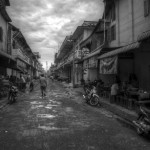
There are four major international donors to land rights development and reform in Cambodia: the World Bank, Germany, Finland and Canada. Their support spans multiple programs and several years with the overall objective of improving land tenure security and promoting stable land markets. ...
National Bank of Cambodia
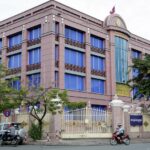
The National Bank of Cambodia (NBC) was established through the Law on the organization and conduct of the National Bank of Cambodia in 1996.1 NBC is the nation’s central bank, whose mission is to determine and direct the monetary policy in order to maintain price ...
Economy and commerce
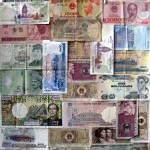
Counting money. Photo by Aaron Gilson, taken on 5 April 2013. Licensed under CC BY-NC-ND 2.0.Cambodia re-opened for international trade in the 1980s, opened up to foreign investment in 1994, joined ASEAN in 1999, and became a member of the WTO in 2004. Its bilateral ...
Biofuel crops
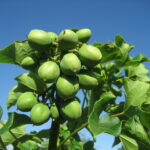
Biofuel crops have a significant potential for contributing to future energy requirements worldwide. Agricultural lands offer energy farming as an alternative to their usual role of food production. Biofuel crops are an environmentally valuable means of sustainable energy production.120 The demand for transport fuels in ...
Government
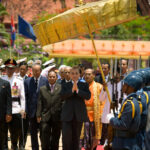
Cambodia is set up as a multi-party democracy under a constitutional monarchy. The King serves as the head of state and the Prime Minister is the head of the Royal Government of Cambodia. Norodom Sihamoni,174 the King, was crowned in 2004 after the abdication of ...
Solid waste
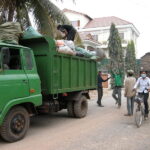
Trash collection in Siem Reap province, Cambodia. Photo taken by David Villa, taken on 12 January 2008. Licensed under CC BY 4.0 deED.Solid waste is defined as “used things, materials, or products that remain or are generated from human daily activities and livelihood and do ...
Agricultural production

Rice field in Cambodia’s countryside. Photo by fmpgoh, taken on 15 July 2009. Licensed under CC BY-NC-ND 2.0The main products from the agriculture sector are rice, rubber, corn, vegetables, cashews and cassava. Unprocessed agricultural exports were projected to be more than 90 percent of total agricultural ...
Water policy and administration

In Cambodia, alternate periods of drought and heavy rains bring challenges for water management. The current trends show increasing annual rainfall and temperature throughout Cambodia, with a likelihood that both flooding and droughts will increase in frequency, severity and duration385. Water management involves issues of ...
Ministry of Commerce

In 1996, the Ministry of Commerce (MoC) was established by law. Its organization and functioning is defined by a sub-decree of the Royal Government of Cambodia. After a nomination of the Prime Minister’s candidate and the vote of confidence on the cabinet by the National ...
Fisheries production
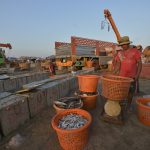
Local workers loading fresh catch to be transported to the city market at Chhnoc Trou pier, Kampong Chhnang province, Cambodia. Photo by Sylyvann Borei/World Fish, taken on 7 April 2014. Licensed under CC BY-NC-ND 2.0.Cambodia has abundant and productive fisheries. Fish is a traditional staple in the Cambodian ...
Forest classifications
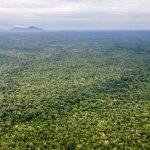
The classification of forests is set out in the Law on Forestry 2002. The law applies to both natural forests and plantations, and “defines the framework for management, harvesting, use, development and conservation of the forests in the Kingdom of Cambodia. The objective of this ...
Cassava

Cassava is a significant contributor to the agricultural sector in Cambodia. The planting, harvesting, processing and export of cassava provides jobs and livelihoods for thousands of Cambodians. Cassava is a significant cash crop for Cambodian farmers.428 Cassava production in Cambodia has increased substantially since 2006. ...
Budget
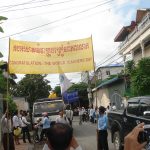
Cambodian Independent Teachers’ Association and Free Trade Union of Workers of the Kingdom of Cambodia celebrated the World Teacher Day from Cambodia. Photo by Education International, taken on 5 October 2009. Licensed under CC BY-NC 2.0Cambodia’s national budget determines state expenditures and revenues. It is ...
Community fisheries
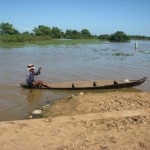
Community fishery refuges, Battambang, Cambodia. Photo by Alan Brooks/WorldFish, taken on 2 November 2011. Licensed under CC BY-NC-ND 2.0.Fishing practices in Cambodia are classified into three broad categories: small-scale or family fishing, medium-scale and large-scale or commercial fishing.In 2001, aware of the need to safeguard ...
Parliament

Upon the reinstatement of the second monarchy in 1993, Cambodian citizens are the master of their destiny and sources of all power. With the introduction of the liberal democracy in the Kingdom, all Cambodians at their 18 years or over, except where it is prescribed ...
Ministry of Education, Youth and Sports

H.E. Hang Chuon Naron and Julie Chung in the inauguration of the Rice Academy, Cambodia. Photo by U.S Embassy Phnom Penh, take on 17 September 2014. Licensed under CC BY-NC-ND 2.0In 1996, the Ministry of Education, Youth and Sport (MoEYS) was established.510 Its organization and functioning ...
Primary and secondary education
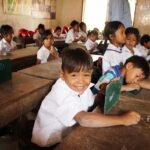
Article 68 of Cambodia’s Constitution states that the Government shall provide free primary and secondary education for all citizens and each individual shall pursue basic education for at least 9 years. Education is a fundamental engine of social and economic development for a country, especially ...
Marine and coastal areas
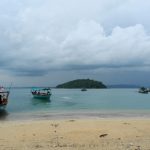
In terms of attractiveness, one of Cambodia’s assets is the relative absence of intense development along its coasts, in comparison with neighboring countries. The 440 kilometer-long coastline includes a large area of non-urbanized zones, where locals can make their livelihoods from coastal resources. Cambodia’s coastline ...




